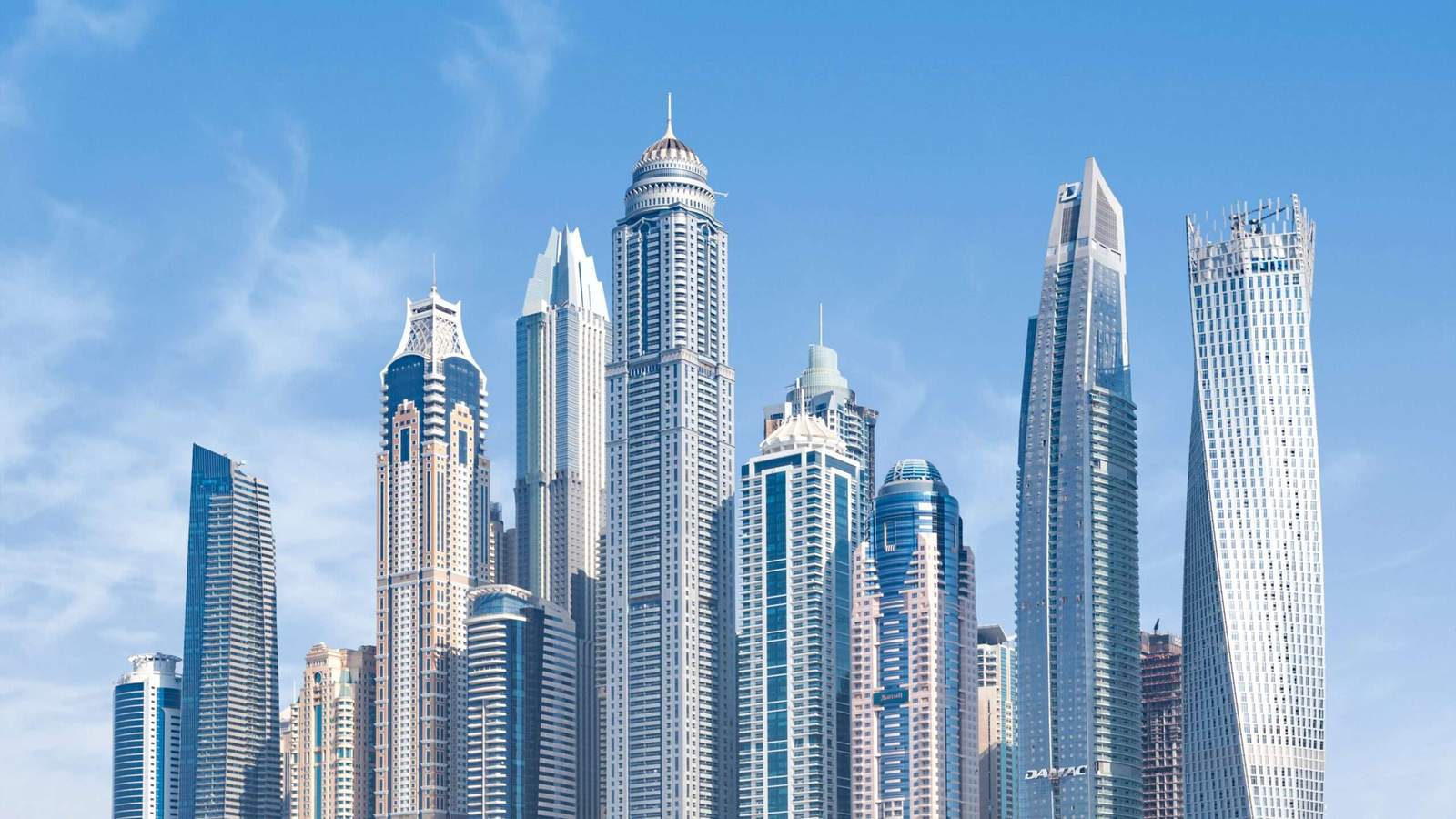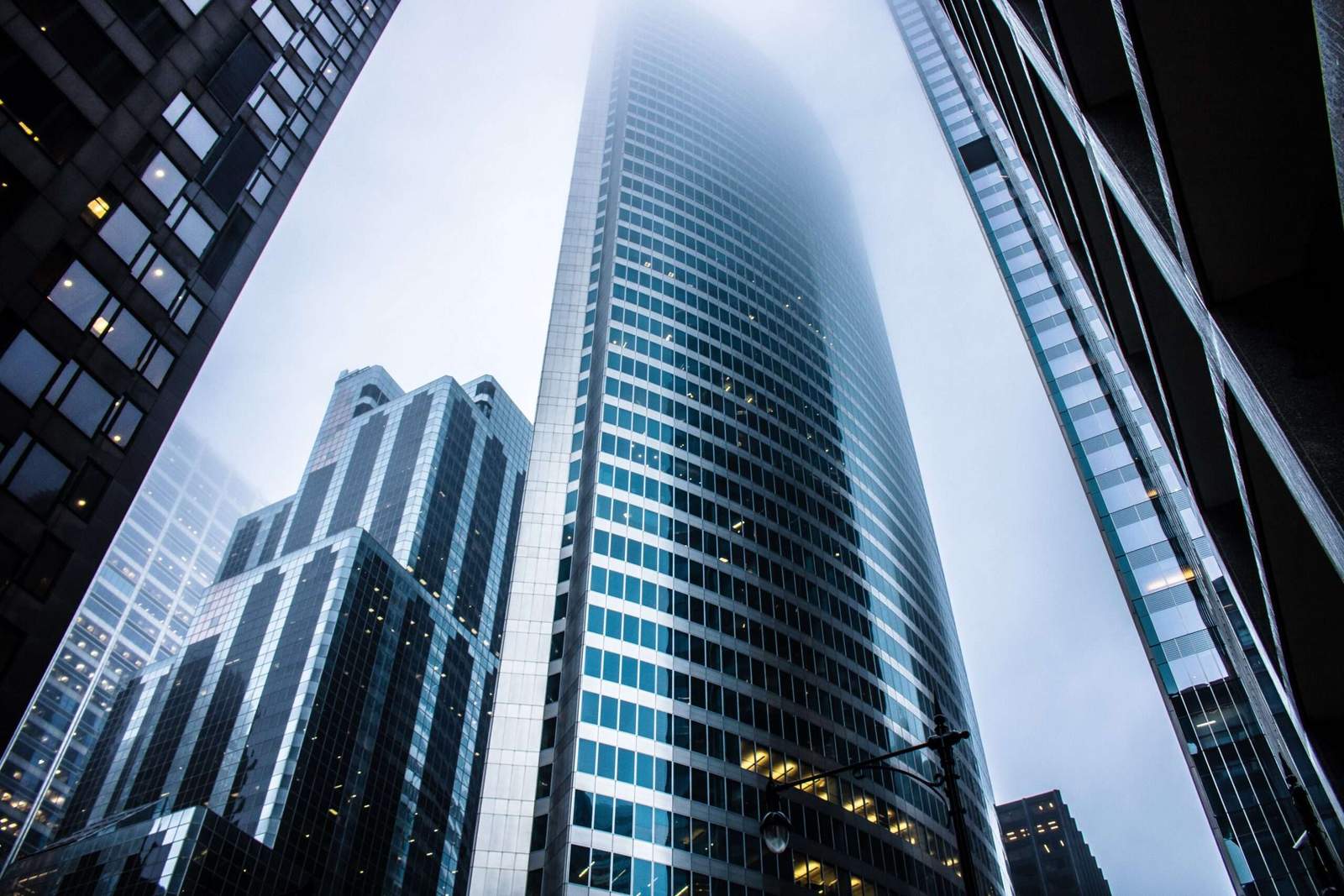Skyscrapers have become an iconic part of the global urban landscape,
but few of us have delved into the science behind their construction.
From the materials used to the structural mechanics,
building skyscrapers is an achievement that requires extraordinary engineering and design considerations.
In this article, we will explore the basics, history, materials, design challenges,
and recent developments in skyscraper construction.

The history of skyscraper construction
The history of skyscraper construction is a long and complex one, going back centuries and crossing continents.
First real skyscraper was built in Chicago in 1885,
and with the increasing popularity of these tall and impressive buildings,
Science and engineering involved in its construction have also increased.
The earliest known tall buildings were the ziggurats of ancient Mesopotamia, built around 3000 BC.
The Great Pyramid of Giza, completed around 2570 BC, was one of the tallest structures ever built,
at 481 feet (146.7 meters) high.
Skyscraper construction in the United States began with the Home Insurance Building in Chicago,
which was completed in 1885 and reached 138 feet (42.1 m) in height.
This structure relied on a steel frame to support its ten floors and is considered the first “modern” skyscraper.
Steel-framed skyscrapers dominated the landscape of large American cities.
such as New York, Chicago, and Philadelphia, during the late nineteenth and early twentieth centuries.
By the mid-20th century, the use of reinforced concrete in building construction allowed taller,
more elaborate structures to be built.
History and basics of skyscraper construction
The invention of the elevator in the late 19th century was also a major milestone in skyscraper construction,
allowing the construction of much larger and taller buildings.
This technology has also allowed for the construction of some of the tallest skyscrapers in the world, such as the Empire State Building in New York City (1,250 feet, 381 meters).
and the Burj Khalifa in Dubai (2,716 feet, 828 metres).
In building modern skyscrapers, engineers must consider the effects of wind, seismic activity,
and other environmental factors in order to ensure the integrity of the structure.
Advanced computer modeling and simulation tools have taken skyscraper engineering to a whole new level,
allowing for taller and more ambitious structures to be built.
As the history of skyscraper construction continues to evolve, engineers and builders are constantly pushing the limits of what is possible.
And with each new structure, they continue to demonstrate the power and potential of human creativity.

Materials used in building a skyscraper
Skyscrapers are an iconic part of the skyline in many major cities around the world – and building them is an art form in itself.
Modern skyscrapers are the result of the innovative use of materials and technologies to create structures that are strong,
durable and aesthetically pleasing.
Different materials are used in the construction of the skyscraper based on their strength, weight, cost and availability.
Here, we explore some of the most commonly used materials in skyscraper construction.
Steel is by far the most widely used material in the construction of tall buildings, as it is lightweight, strong,
durable and relatively inexpensive.
Which makes it the ideal choice for many projects.
Steel is used for structural members such as columns, beams, and trusses,
as well as for other components such as handrails and stairs.
The best steel is also produced from recycled scrap metal, which is melted down to produce the raw material.
Steel columns and beams are often encased in concrete for added strength.
Another common material used in skyscraper construction is reinforced concrete.
This type of concrete is made by adding steel bars and wires to the mixture.
Which gives it extra strength and durability.
It is also more resistant to fire and cracking than regular concrete, and is often used in the construction of tall buildings.
The reinforcing steel bars are anchored to the concrete, helping to distribute the weight of the building evenly and preventing swaying or shifting.
History and basics of skyscraper construction
In addition to steel and reinforced concrete, other materials commonly used in building skyscrapers include aluminum,
wood, glass, brick, and stone.
Aluminum is used for window framing, baseboards, and other features,
while wood can be used for cabinetry, flooring, and finishes.
Glass is often used for windows and exterior cladding, adding to the aesthetics of a building.
Brick and stone are also sometimes used as a decorative feature.
Skyscrapers are designed to stand the test of time,
and the materials used in their construction must be of the highest quality.
Skilled engineers, architects and builders come together to create these magnificent structures,
often blending the best of form and function.

Design challenges in building a skyscraper
Building skyscrapers has become increasingly complex and difficult due to the need for safety and structural integrity.
The design and construction of skyscrapers requires a wealth of experience and knowledge, as well as a deep understanding of the materials used and their properties.
The first problem we face when building a skyscraper is the sheer weight of the structure, as the height increases, so does the need to account for the weight of the additional stories.
To combat this problem, skyscrapers use steel and reinforced concrete, both of which are able to withstand massive loads.
Unfortunately, the added weight of these materials can place additional stresses on the structure.
What required careful engineering and design to prevent the building from collapsing under its own weight.
In addition to the weight of a skyscraper, designers must also consider problems caused by wind.
History and basics of skyscraper construction
Tall buildings are particularly vulnerable to wind-induced vibrations, which can cause the structure to sway dangerously from side to side.
To combat this, stiffening techniques such as adding a shear wall or a tuned mass damper can be used to mitigate the effects of wind.
Finally, there are the seismic forces that must be taken into account when constructing a skyscraper.
Seismic forces are caused by earthquakes and are highly unpredictable,
so it is imperative that a skyscraper be designed to be able to withstand intense shaking without collapsing.
To do this, engineers must use special seismic design techniques and earthquake-resistant materials,
such as steel and reinforced concrete, to mitigate the effects of an earthquake.
In general, building a skyscraper is a complex engineering feat that requires a deep understanding of the forces and materials involved.
From accounting for the massive weight of the structure to mitigating the effects of seismic forces,
every detail must be carefully considered to ensure the integrity and safety of the building.
As technology continues to advance, we can expect to see more innovative solutions and designs in skyscraper construction.

Recent developments in skyscraper construction
In the 21st century, the development of skyscrapers has witnessed remarkable progress in terms of engineering and construction techniques.
Modern skyscrapers are designed to meet the demands of an ever-evolving urban landscape.
Using new materials and technologies to reduce their environmental impact and maximize their resistance to the effects of natural disasters.
The use of steel and concrete in the construction of the skyscraper was a major advance, as it allowed for taller,
more solid construction with extended lifespan.
The steel provides greater rigidity and provides resistance against strong winds,
while its lightweight design allows for efficient use of the ground.
Concrete is often used in composite structures, which provides increased durability and fire resistance.
The use of prefabrication techniques allowed skyscrapers to be completed at a faster pace and with a greater degree of accuracy.
This entails the use of pre-selected components such as panels, frames and columns,
which are manufactured in a factory and shipped to the construction site.
This greatly reduces the time and labor costs associated with traditional construction methods.
Elevators also play a pivotal role in the construction and operation of modern skyscrapers.
Advancements in elevator design and technology have allowed faster and more efficient movement of people and goods throughout the building.
while also allowing for higher efficiency and thus lower energy costs.
Automated elevators can reduce waiting times and congestion, allowing for more efficient movement through the building.
The use of modern materials and technologies has allowed the construction of skyscrapers
that can withstand seismic activity and strong winds, as well as natural disasters such as hurricanes and floods.
History and basics of skyscraper construction
Skyscrapers are also now equipped with features, such as collapsible columns and shear walls,
which allow the building to be more resistant to dynamic forces.
These features, along with the earthquake and wind resistant design,
ensure the safety of passengers during such disasters.
In conclusion, the development of modern skyscrapers has been a remarkable success in terms of engineering and construction technology.
Using steel, concrete, prefabrication techniques, advanced elevator systems, and disaster-resistant design,
Modern skyscrapers are able to meet the challenges of the growing urban landscape.

Steel frame technology
It is technology is one of the most important and integral parts of any skyscraper construction project.
Steel frames consist of steel columns and beams that form the skeleton of any structure,
and are an important way to provide stability and strength.
Steel frame technology has a number of advantages,
including being lightweight, durable and able to withstand significant loads.
It is also highly fire resistant and has great structural integrity.
The use of steel frames enabled engineers to build taller and taller buildings.
To construct a skyscraper, steel frames are placed in a straight column-like arrangement with beams attached to them.
In addition, these frames are welded together with steel bars, beams and other connecting elements to strengthen and make them rigid.
Steel frame construction has been around for centuries, but was first used in skyscrapers in the late 19th century.
In the early days, it required a lot of hard work as each steel frame had to be built from individual pieces.
However modern steel frame construction is simpler and efficient thanks to prefabricated steel frames.
Prefabricated steel frames are also erected in a factory on a large scale and then transported to the construction site,
where they are simply lifted and fitted into place.
This method of steel frame construction is cost effective and eliminates the need for on-site labor,
making it easier and more efficient.
It has also been used in a variety of projects, including tall buildings, bridges, and other structures.
Steel structure technology has allowed architects and engineers to push the boundaries
of architectural design and create structures that were once thought impossible.
With this technology, engineers can explore creative solutions and build structures that are taller, stronger and more efficient.

High strength concrete applications
The use of high strength concrete (HSC) in the construction of skyscrapers is essential to achieving their lofty heights.
Thanks to its superior properties, HSC makes skyscraper construction more feasible than it would be without the material.
In skyscrapers, building foundations must be reinforced with HSC in order to support the weight of the building above.
This is done by pouring a mixture of cement and aggregate into a formwork, or box-like structure that acts as a temporary mould.
This concrete mix is then left to harden, forming a foundation that can easily provide the support needed for a skyscraper.
Thanks to its superior compressive strength, HSC is also used to make sure that structural columns,
columns and walls remain strong and secure.
The use of HSC in skyscraper formwork also ensures that these structures will be able to withstand the enormous stresses that skyscrapers are subjected to when in use.
In addition to its exceptional strength, HSC has other properties that make it ideal for use in skyscraper construction.
It has excellent thermal insulation properties, which makes it ideal for use in high-rise buildings.
It also has a high fire rating, which reduces the risk of fire damage to any internal structures within a skyscraper.
The use of HSC in skyscraper construction is not limited to its foundations and structures only,
as HSC is also used as a decorative coating.
This is because its smooth surface can be used to create beautiful facades that give tall buildings a pleasing aesthetic appearance.

Building automation systems
The technological revolution of the 21st century has seen a major shift in the way skyscrapers are constructed.
Building automation systems (BAS) are now used to control building operations,
from heating and cooling systems, to security and monitoring, to lighting and energy consumption.
These systems typically use sophisticated algorithms to automate complex processes,
and can be programmed to operate within the building structure to ensure optimal energy efficiency.
For example, BAS can be programmed to detect changes in the outside temperature,
and then adjust the temperature inside the building accordingly.
In addition, these systems can be used to monitor and adjust a building’s energy consumption in real time,
allowing for more efficient building management.
History and basics of skyscraper construction
In addition to energy control, BAS is used in tall buildings to manage aspects of the structure,
such as air quality and environmental conditions.
It can also be used to monitor the movement of people, and to ensure that the building is safe.
In some cases, BAS can be used to control the movement of elevators,
ensuring that the building is quickly and safely evacuated in the event of an emergency.
Finally, BAS is used for a wide variety of other tasks.
For example, they can be used to track a building’s assets, from furniture and equipment to supplies, employees, and other items.
This helps ensure everything is accounted for and that the building operates as efficiently as possible.
All of this technology has dramatically changed the way skyscrapers are built,
and introduced a new level of efficiency to the construction process.
By using BAS, builders can be confident that their buildings will be safe,
and that the systems used to operate them will operate as efficiently as possible.
This is why BAS has become an essential part of the skyscraper construction process around the world.
For more architectural news


 العربية
العربية